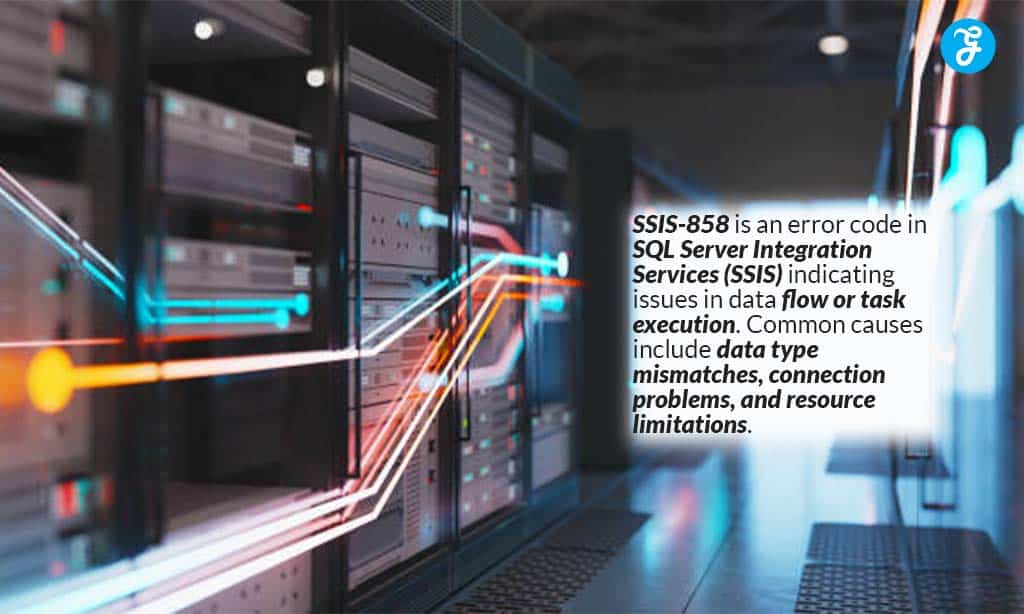PROTECT YOUR DNA WITH QUANTUM TECHNOLOGY
Orgo-Life the new way to the future Advertising by AdpathwaySlow data transfers, server hiccups, and lost queries can turn daily data loading into a major headache. You need a tool that is both fast and reliable. A search for ssis-858, however, can be confusing. The term refers to both a high-speed data integration process and a 2023 Japanese adult film starring Nagi Hikaru. This guide focuses strictly on the technical side, showing you how to use SQL Server Integration Services (SSIS) to master your data.
You can open Table of Contents show
We will break down how to connect to APIs, fine-tune data loading, manage data sources, and work with JSON calls. You’ll learn the steps to upgrade your processes, boost performance, and cut costs.
Key Takeaways
- The term “ssis-858” is associated with both a data integration tool for SQL Server and a 2023 adult film, so it is important to refine your search for technical information.
- SSIS is a powerful tool for building enterprise-level data pipelines, capable of processing millions of rows when properly configured.
- Key features include broad connectivity to sources like SQL Server, Oracle, flat files, Salesforce, and FTP/SFTP, along with robust data transformation capabilities.
- The graphical interface in SQL Server Data Tools (SSDT) uses a drag-and-drop system, multi-language support, and built-in logging to help teams build and troubleshoot data flows quickly.
- Best practices include using the Project Deployment Model, parameterizing connections, tuning buffer sizes, and applying the latest SQL Server Cumulative Updates to ensure optimal performance.
What is ssis-858?
While the identifier SSIS-858 is linked to an adult video starring Nagi Hikaru, produced by S1 NO.1 STYLE in 2023, this guide focuses on its application in the world of data management. In this context, ssis-858 refers to a powerful process within SQL Server Integration Services (SSIS), a platform designed to handle complex data integration and workflow tasks.
SSIS is a core component of Microsoft’s SQL Server, first introduced with SQL Server 2005 to replace its predecessor, Data Transformation Services (DTS). It provides a framework for building high-performance Extract, Transform, and Load (ETL) processes that move data from various sources, clean and reshape it, and load it into a final destination.
Key Features of SSIS-858
Within SQL Server Data Tools (SSDT), SSIS provides a visual designer where you can build data pipelines, known as packages. These packages combine connectors, tasks, and data transformations to create efficient, automated workflows that can handle demanding data challenges without requiring extensive custom code.
Advanced Integration Capabilities
SSIS allows you to build data pipelines that connect applications like SQL Server and Salesforce using a wide array of built-in connectors. These include adapters for FTP/SFTP, flat files like CSVs, and various databases such as Oracle and MySQL. You can pull JSON feeds from web services or move XML files to different servers seamlessly.
The platform’s flexibility shines when dealing with connection issues. If a primary connection fails, developers can quickly switch to an alternative like an OLE DB or ADO.NET source to keep data flowing.
SSIS offers a rich library of pre-built tasks that allow teams to design complex ETL graphs visually. For cloud-based workflows, the Azure Feature Pack for Integration Services adds specific connectors for services like Azure Blob Storage and Azure Data Lake Storage, making hybrid data solutions straightforward to implement.
Enhanced Performance and Scalability
SSIS is designed for performance, running data transformation tasks across multiple CPU cores to finish jobs faster. The core of this is the Data Flow Engine, which manages memory buffers efficiently to process large datasets without writing intermediate data to disk.
A key feature for scalability is “SSIS Scale Out,” introduced in SQL Server 2017. This allows you to distribute package executions across multiple machines, creating a powerful grid that can handle massive data volumes.
A well-tuned SSIS package can process millions of rows per minute, making it suitable for enterprise-level data warehousing and large-scale data migration projects.
This power gives teams the confidence to meet tight deadlines and handle growing data demands without performance bottlenecks.
User-Friendly Interface
SSIS development happens within SQL Server Data Tools (SSDT), an extension of Microsoft Visual Studio. For the latest features, developers typically use Visual Studio 2022. This provides a familiar, user-friendly environment with a clear visual designer, large icons, and helpful color cues that signal the status of your workflows.
The interface is built around two main surfaces:
- Control Flow: This is where you orchestrate the overall workflow, defining the order of tasks like executing a SQL query or sending an email.
- Data Flow: Inside a Data Flow Task, you connect sources, transformations, and destinations to move and manipulate data.
You can drag and drop components from the toolbox, connect them with paths, and configure their properties through simple dialog boxes. This visual approach makes it easy to understand, build, and debug even the most complex data pipelines.
Benefits of Using ssis-858
Leveraging ssis-858 processes within SQL Server Integration Services helps you shorten run times, reduce development costs, and create more reliable data pipelines. Read on to discover the specific advantages.
Streamlined Data Processing
SSIS is built to move data efficiently. It connects to SQL Server tables, web services, and flat file feeds using optimized connectors like OLE DB and ADO.NET. Most transformations run in memory, dramatically reducing processing time by minimizing slow disk reads and writes.
The platform also includes robust logging capabilities. You can configure packages to capture detailed events, warnings, and errors into SQL Server tables using the built-in “SSIS Log Provider for SQL Server,” providing a clear audit trail for quick troubleshooting and performance analysis.
Improved Workflow Automation
SSIS packages can be automated using SQL Server Agent, a powerful scheduling tool built into SQL Server. This allows you to run data integration tasks on a set schedule, such as nightly or hourly, without any manual intervention.
For more advanced cloud-based orchestration, SSIS packages can be executed within Azure Data Factory (ADF). This allows you to integrate your SSIS workflows into broader cloud data pipelines, combining them with other Azure services. Many organizations use ADF to manage complex, event-driven workflows that trigger packages based on events like a new file arriving in Azure Blob Storage.
Cost-Effective Solutions
Because SSIS is included with the Standard, Enterprise, and free Developer editions of Microsoft SQL Server, it offers a highly cost-effective solution. There are no additional licensing fees for the core ETL functionality.
This contrasts sharply with many third-party tools that charge per user or by data volume. For instance, tools like Informatica PowerCenter are aimed at large enterprises and can have high licensing costs, while Talend offers a free open-source version but charges for its more feature-rich enterprise edition.
How to Maximize the Potential of SSIS-858
To get the most out of your SSIS packages, it’s crucial to follow established best practices. Proper setup and tuning can turn a good ETL process into a great one, preventing performance issues before they impact your budget.
Best Practices for Implementation
A successful SSIS implementation starts with a solid design. Following these guidelines will make your packages more reliable, secure, and easier to maintain.
- Use the Project Deployment Model: Since SQL Server 2012, this has been the standard. It allows you to deploy entire projects to the SSIS Catalog (SSISDB), which provides versioning, environment management, and detailed operational reports.
- Parameterize Your Connections: Avoid hard-coding connection strings. Instead, use project parameters and environment variables for server names, file paths, and credentials. This lets you move code between development, testing, and production without changing the package itself.
- Implement Robust Error Handling: Use Event Handlers or error outputs on Data Flow components to catch failures. You can configure your package to send email notifications, log errors to a table, or redirect failed rows to a separate destination for analysis.
- Secure Sensitive Information: Use the `Encrypt sensitive data with password` protection level or store sensitive values in the SSIS Catalog, which encrypts them automatically. Never embed passwords directly in your code.
Tips for Optimizing Performance
A few targeted tweaks can dramatically speed up your data pipelines. Focus on these areas to cut down on lag and resource usage.
- Adjust Buffer and Batch Sizes: In the Data Flow Task, fine-tune the “DefaultBufferSize” and “DefaultBufferMaxRows” properties. For destinations, setting the “Maximum insert commit size” can prevent locking issues and improve throughput. A common starting point is setting “DefaultBufferMaxRows” to 50,000 and `Maximum insert commit size` to 100,000.
- Remove Unnecessary Columns: Only select the columns you truly need from your source. Smaller row sizes mean more rows can fit into each memory buffer, reducing I/O and speeding up the entire process.
- Use the Right Transformations: Avoid “blocking” transformations like Sort or Aggregate when possible, as they require the entire dataset to be loaded into memory. When you can, push transformations back to the source database using an optimized SQL query.
- Keep SQL Server Updated: Regularly apply the latest Cumulative Updates (CUs) for your version of SQL Server. Microsoft frequently releases performance fixes and optimizations for the database engine and SSIS.
- Monitor with Performance Counters: Use Windows Performance Monitor (PerfMon) to track counters like “Buffers spooled” and “Rows read” to identify bottlenecks in your data flow.
Common Applications of SSIS-858
Teams use SSIS to build high-volume ETL flows, moving records from various systems into a central data warehouse or data lake. From there, the data can be connected to reporting platforms and orchestration tools to drive business decisions.
Data Migration Projects
Data migration is a core use case for SSIS. It excels at moving large volumes of data from legacy systems to modern platforms, such as upgrading an on-premises SQL Server to Azure SQL Database. This is especially relevant as cloud adoption accelerates, with Gartner forecasting that worldwide end-user spending on public cloud services will reach $723.4 billion in 2025.
Using the Azure Feature Pack, developers can easily create packages that read from a local source and write directly to Azure Blob Storage or an Azure Data Lake. The ability to use Control Flow tasks to manage dependencies and Data Flow tasks for high-speed transfers makes SSIS a reliable choice for complex cloud migration projects.
Business Intelligence Solutions
Business Intelligence (BI) tools transform big data into actionable insights, and SSIS is often the engine that feeds them. In a typical Microsoft BI stack, SSIS extracts data from operational systems (like CRMs and ERPs) and loads it into a data warehouse.
This data warehouse is then often modeled into a cube using SQL Server Analysis Services (SSAS). Finally, reporting tools like Power BI, Tableau, or SQL Server Reporting Services (SSRS) connect to these models to create interactive dashboards and reports.
This powerful combination allows users to explore KPIs and trends, with quick report sharing available through URL copying and integrations with platforms like WhatsApp, Telegram, and Twitter buttons for your group chat. Third-party vendors like KingswaySoft and ZappySys offer specialized SSIS connectors that integrate directly with the Power BI API, further simplifying this process.
Takeaways
This guide provides a clear roadmap for using SSIS effectively. We’ve covered its core features, from API connectivity and JSON handling to performance tuning and workflow automation.
By applying these best practices, you can build faster and more reliable data pipelines.
These tips can significantly trim runtime and free up valuable server resources. Use this knowledge to give your next data migration or BI project a powerful boost and enjoy the efficiency of a well-tuned system.
FAQs on SSIS-858
1. What is SSIS-858?
In a technical context, ssis-858 refers to processes within SQL Server Integration Services (SSIS), a tool for building data pipelines. It enables you to extract, transform, and load (ETL) data from various sources with high efficiency.
2. How do I get started with SSIS-858?
You can start by installing Visual Studio and the SQL Server Data Tools (SSDT) extension. Then, you create a new Integration Services project, add a Data Flow Task, choose a data source connector, configure it, and run the package to move your data.
3. How does SSIS-858 speed up my data jobs?
SSIS uses in-memory buffers to perform transformations, which is much faster than writing to disk. It also supports parallel execution, allowing multiple tasks to run at once, and features optimized connectors for bulk loading data into destinations like SQL Server.
4. Can I stream live data with SSIS-858?
While SSIS is primarily a batch-processing tool, it can be configured to run in near real-time. By scheduling packages to run every few minutes, you can process data from sources as it arrives and keep your reporting dashboards updated with fresh information. For true real-time processing, SSIS can also work with Change Data Capture (CDC) to handle data as it changes.


























 English (US) ·
English (US) ·  French (CA) ·
French (CA) ·  French (FR) ·
French (FR) ·